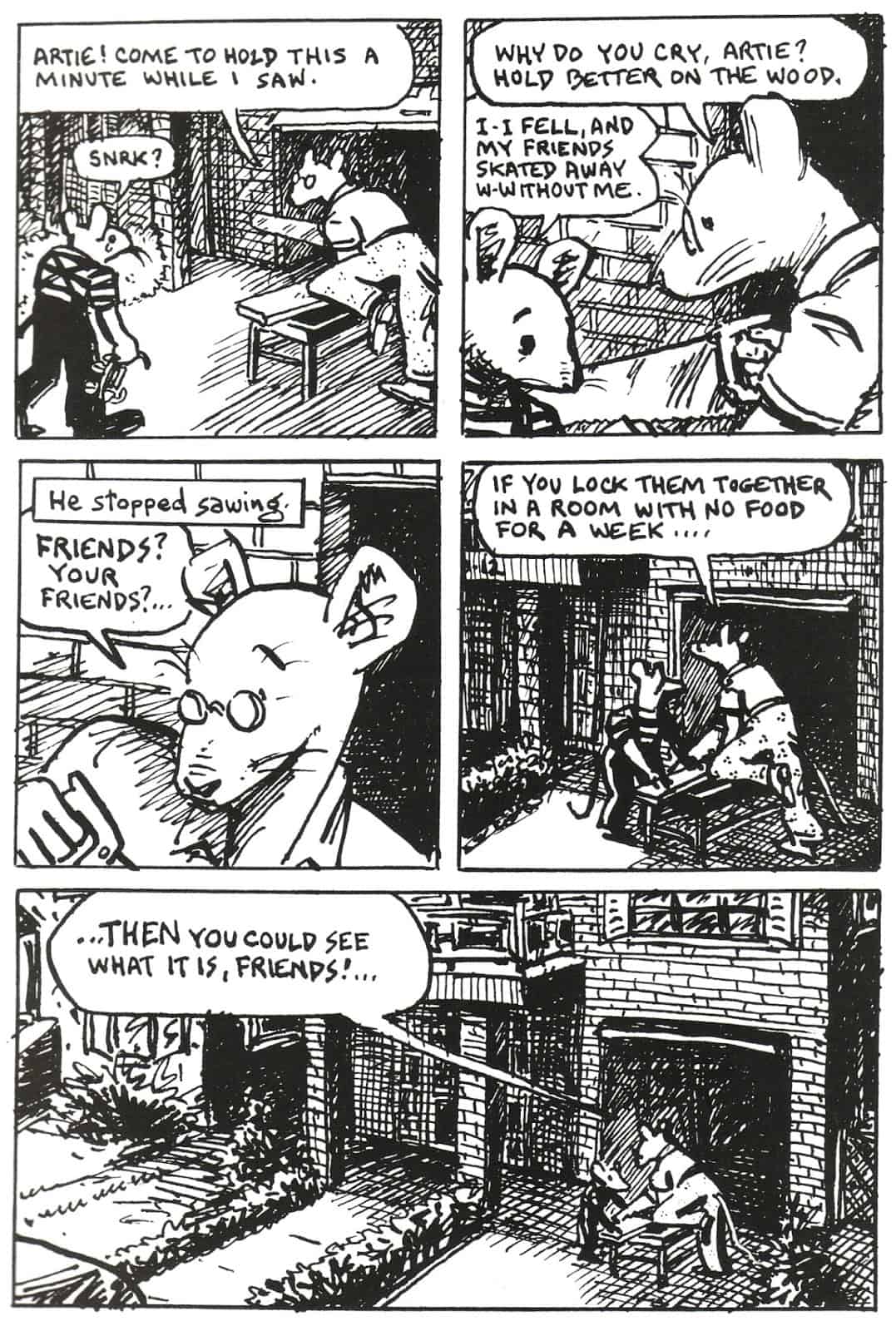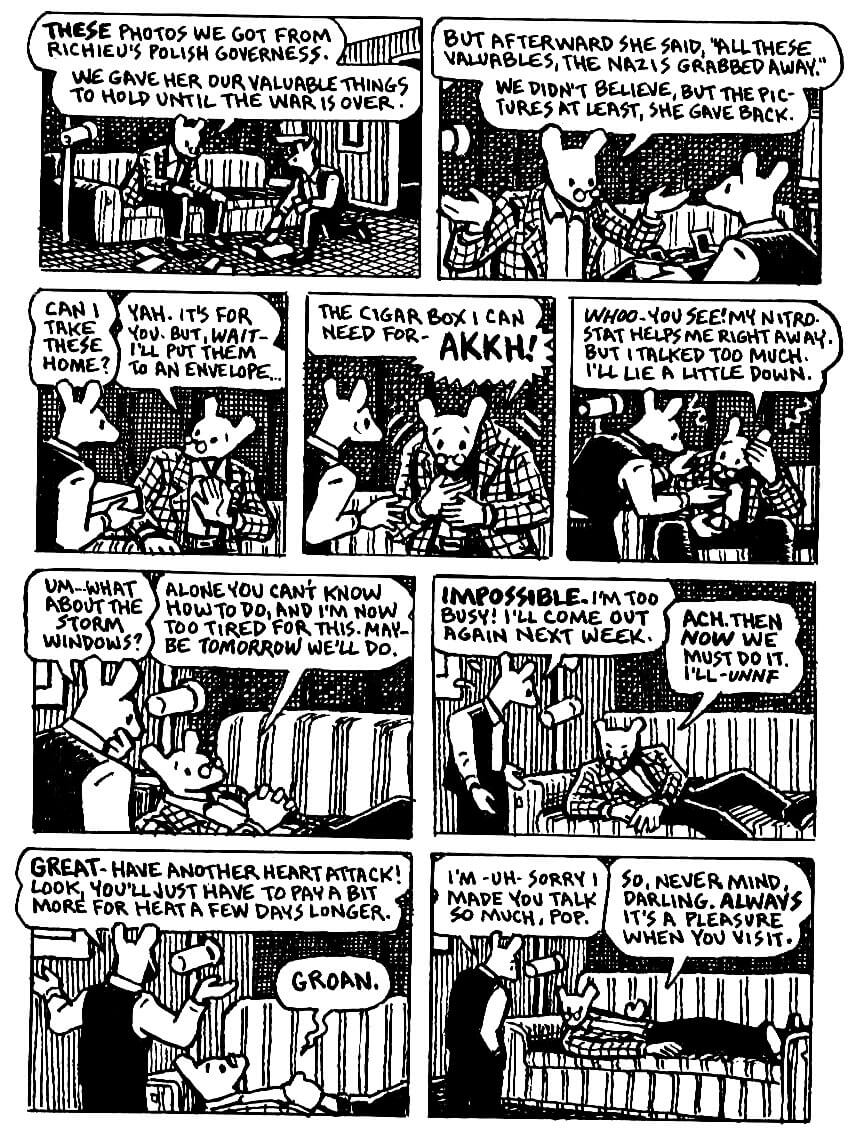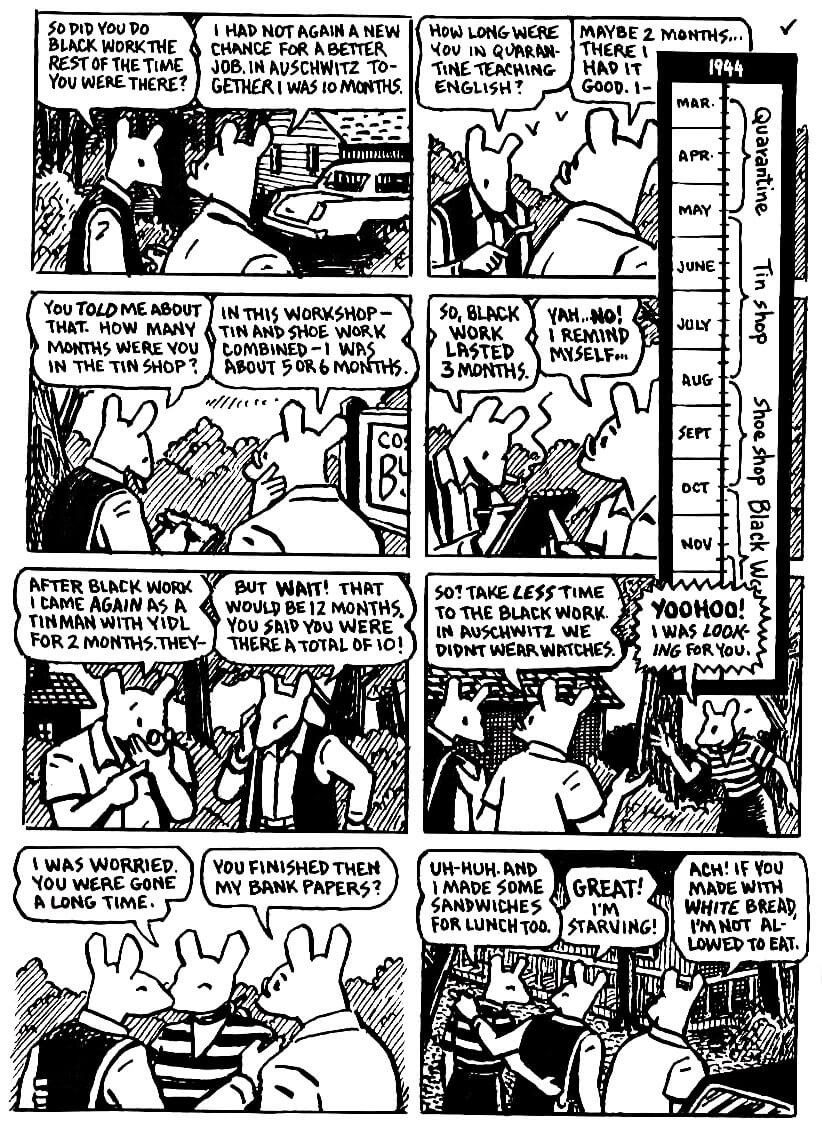

In 1943, the Nazis move the Jews of the Sosnowiec Ghetto to Srodula and march them back to Sosnowiec to work. In "Prisoner on the Hell Planet", Art is traumatized by his mother's suicide three months after his release from the mental hospital, and in the end depicts himself behind bars saying, "You murdered me, Mommy, and left me here to take the rap!" Though it brings back painful memories, Vladek admits that dealing with the issue in such a way was for the best. Mala had tried to hide it, but Vladek finds and reads it. "Prisoner on the Hell Planet" (1973), an early, expressionistic strip about Spiegelman's mother's suicide, reprinted in Maus.ĭuring one of Art's visits, he finds that a friend of Mala's has sent the couple one of the underground comix magazines Art contributed to. He sneaks across the border and reunites with his family.

After his release, he finds Germany has annexed Sosnowiec, and he is dropped off on the other side of the border in the German protectorate. Vladek is captured at the front and forced to work as a prisoner of war. After they return, political and anti-Semitic tensions build until Vladek is drafted just before the Nazi invasion of Poland. Anja suffers a breakdown due to postpartum depression after giving birth to their first son Richieu, and the couple go to a sanitarium in Nazi-occupied Czechoslovakia for her to recover. Vladek begs Art not to include this in the book and Art reluctantly agrees. Vladek tells of his time in the Polish city of Częstochowa and how he came to marry into Anja's wealthy family in 1937 and move to Sosnowiec to become a manufacturer. Art asks Vladek to recount his Holocaust experiences. Vladek has remarried to a woman called Mala since the suicide of Art's mother Anja in 1968. His father responds in broken English, "Friends? Your friends? If you lock them together in a room with no food for a week, then you could see what it is, friends!" Īs an adult, Art visits his father, from whom he has become estranged. When he returns home, he finds his father Vladek, who asks him why he is upset, and Art proceeds to tell him that his friends left him behind. In Rego Park in 1958, a young Art Spiegelman is skating with his friends when he falls down and hurts himself, but his friends keep going. The story that Vladek tells unfolds in the narrative past, which begins in the mid-1930s, and continues until the end of the Holocaust in 1945. In the frame tale of the narrative present, Spiegelman interviews his father Vladek in the Rego Park neighborhood of Queens in New York City in 1978–79. Most of the book weaves in and out of two timelines. Maus was one of the first books in graphic novel format to receive significant academic attention in the English-speaking world. A collected volume of the first six chapters that appeared in 1986, Maus I: My Father Bleeds History, brought the book mainstream attention a second volume, Maus II: And Here My Troubles Began, collected the remaining chapters in 1991. He serialized Maus from 1980 until 1991 as an insert in Raw, an avant-garde comics and graphics magazine published by Spiegelman and his wife, Françoise Mouly, who also appears in Maus. The recorded interviews became the basis for the book, which Spiegelman began in 1978. The book uses a minimalist drawing style and displays innovation in its pacing, structure, and page layouts.Ī three-page strip also called "Maus" that he made in 1972 gave Spiegelman an opportunity to interview his father about his life during World War II. Her grief-stricken husband destroyed her written accounts of Auschwitz. Much of the story revolves around Spiegelman's troubled relationship with his father and the absence of his mother, who died by suicide when Spiegelman was 20. In the narrative past, Spiegelman depicts these experiences, from the years leading up to World War II to his parents' liberation from the Nazi concentration camps. In the frame-tale timeline in the narrative present that begins in 1978 in New York City, Spiegelman talks with his father Vladek about his Holocaust experiences, gathering material and information for the Maus project he is preparing.

In 1992 it became the first graphic novel to win a Pulitzer Prize. Critics have classified Maus as memoir, biography, history, fiction, autobiography, or a mix of genres. The work employs postmodern techniques, and represents Jews as mice and other Germans and Poles as cats and pigs. It depicts Spiegelman interviewing his father about his experiences as a Polish Jew and Holocaust survivor. Maus, often published with the subtitle A Survivor's Tale, is a graphic novel by American cartoonist Art Spiegelman, serialized from 1980 to 1991.


 0 kommentar(er)
0 kommentar(er)
